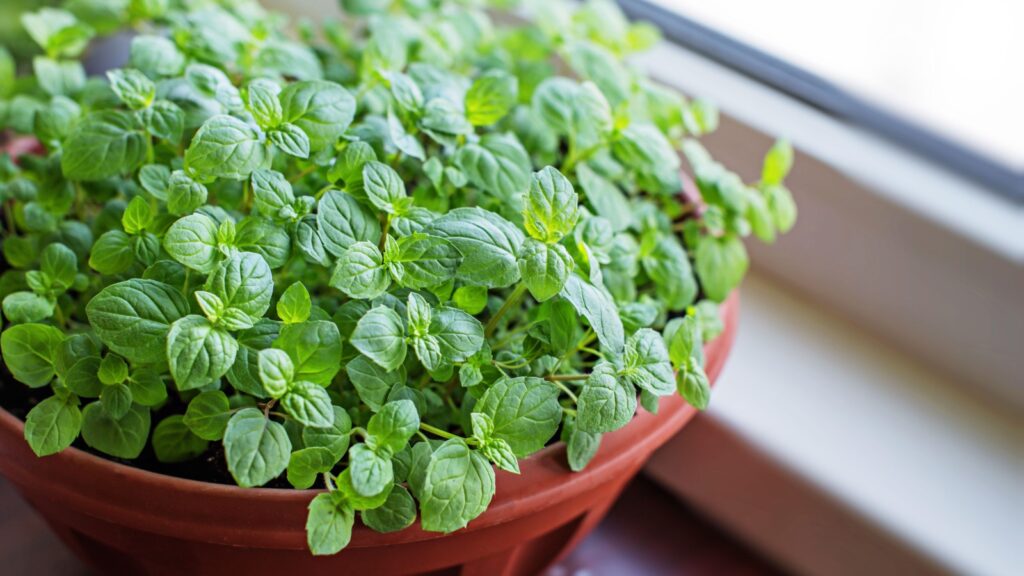How to Grow Mint Indoors: A Comprehensive Guide
Growing mint indoors is a rewarding endeavor that allows you to enjoy the fresh aroma and flavor of this versatile herb year-round. Mint is not only easy to cultivate but also adds a delightful touch to a variety of culinary dishes, beverages, and even home remedies. In this extensive guide, we will explore the various aspects of growing mint indoors, including the best practices, care tips, and troubleshooting common issues.
Understanding Mint
Types of Mint
Mint belongs to the Mentha genus and encompasses several species, each with its unique flavor and aroma. The most common types of mint include:
- Peppermint (Mentha × piperita): Known for its strong flavor and aroma, peppermint is often used in teas, candies, and desserts.
- Spearmint (Mentha spicata): Milder than peppermint, spearmint is commonly used in cooking and cocktails, such as mojitos.
- Chocolate Mint (Mentha × piperita ‘Chocolate’): This variety has a subtle chocolate scent and is great for desserts and teas.
- Apple Mint (Mentha suaveolens): With a fruity aroma, apple mint is often used in salads and fruit dishes.
- Lemon Mint (Mentha citrata): This variety has a citrusy scent and is used in teas and desserts.
Benefits of Growing Mint Indoors
- Freshness: Growing mint indoors ensures you have fresh leaves available whenever you need them, enhancing the flavor of your dishes and drinks.
- Convenience: Having mint readily accessible in your kitchen makes it easier to incorporate into your cooking without the need for frequent trips to the grocery store.
- Air Quality: Mint plants can help improve indoor air quality by filtering toxins and releasing oxygen.
- Aesthetic Appeal: The vibrant green leaves and pleasant aroma of mint can enhance the ambiance of your home.
- Health Benefits: Mint has various health benefits, including aiding digestion, relieving headaches, and providing anti-inflammatory properties.
Getting Started: Supplies You’ll Need
Before you begin growing mint indoors, gather the following supplies:
- Mint Plant or Seeds: You can start with a healthy mint plant from a nursery or grow from seeds. However, starting from a plant is often easier and faster.
- Container: Choose a pot that is at least 6-8 inches in diameter with drainage holes to prevent waterlogging.
- Potting Mix: A high-quality potting mix that retains moisture while providing good drainage is essential for healthy mint growth.
- Watering Can: A watering can or spray bottle for easy watering.
- Fertilizer: A balanced, water-soluble fertilizer to provide nutrients.
- Grow Lights (optional): If natural light is limited, consider using grow lights to ensure your mint receives adequate light.
Step-by-Step Guide to Growing Mint Indoors
Step 1: Choose the Right Location
Mint thrives in bright, indirect sunlight. Choose a location that receives at least 4-6 hours of light daily. A south-facing window is ideal, but if natural light is insufficient, consider using grow lights to supplement.
Step 2: Planting Mint
Starting from a Plant
- Select a Healthy Plant: Choose a mint plant that appears vibrant and healthy, with no signs of pests or disease.
- Prepare the Pot: Fill your chosen container with potting mix, leaving about half an inch of space from the rim.
- Plant the Mint: Gently remove the mint plant from its original pot, being careful not to damage the roots. Place it in the new pot and backfill with potting mix, ensuring the top of the root ball is level with the soil surface.
- Water Thoroughly: After planting, water the mint thoroughly until water drains from the bottom of the pot.
Starting from Seeds
- Sow the Seeds: Fill a seed tray or small pots with potting mix. Sprinkle mint seeds evenly on the surface and lightly cover them with soil.
- Water Gently: Use a spray bottle to moisten the soil without displacing the seeds.
- Provide Light: Place the seed tray in a warm location with indirect sunlight or under grow lights.
- Thin the Seedlings: Once the seedlings have developed a few sets of leaves, thin them out to avoid overcrowding.
Step 3: Watering Mint
Mint prefers consistently moist soil but does not tolerate standing water. Here are some watering tips:
- Check Soil Moisture: Before watering, check the soil’s moisture level by sticking your finger about an inch into the soil. If it feels dry, it’s time to water.
- Watering Technique: Water the plant until you see excess water draining from the bottom of the pot. Make sure to empty the saucer underneath to prevent waterlogging.
- Frequency: Depending on the humidity and temperature, you may need to water your mint every few days. Adjust your watering schedule based on the plant’s needs.
Step 4: Fertilizing Mint
Mint is not a heavy feeder, but providing nutrients can promote healthy growth. Here’s how to fertilize:
- Choose the Right Fertilizer: Use a balanced, water-soluble fertilizer or an organic fertilizer suitable for herbs.
- Fertilizing Schedule: Fertilize your mint every 4-6 weeks during the growing season (spring and summer). Reduce or stop fertilizing in the fall and winter when growth slows.
Step 5: Pruning and Harvesting
Regular pruning encourages bushy growth and prevents the mint from becoming leggy. Here’s how to prune and harvest:
- When to Prune: Prune mint regularly, ideally every few weeks. Remove any dead or yellowing leaves and trim back stems to promote new growth.
- How to Harvest: When harvesting mint, use clean scissors to snip off stems just above a set of leaves. This encourages the plant to produce more leaves.
- Avoid Flowering: Pinch off any flower buds as they appear. Allowing mint to flower can reduce leaf production and alter the flavor.
Step 6: Troubleshooting Common Issues
While mint is relatively easy to grow, you may encounter some common issues:
- Pests: Watch for pests such as aphids, spider mites, and whiteflies. If you notice an infestation, treat it with insecticidal soap or neem oil.
- Diseases: Mint can be susceptible to fungal diseases like powdery mildew. Ensure good air circulation and avoid overhead watering to minimize this risk.
- Leggy Growth: If your mint becomes leggy, it may not be receiving enough light. Move it to a brighter location or supplement with grow lights.
- Yellowing Leaves: Yellow leaves can indicate overwatering or nutrient deficiencies. Check the soil moisture and adjust your watering schedule accordingly.
Benefits of Growing Mint Indoors
- Fresh Flavor: Having fresh mint readily available enhances the flavor of various dishes, drinks, and desserts.
- Health Benefits: Mint has numerous health benefits, including aiding digestion, relieving headaches, and providing anti-inflammatory properties.
- Aromatic Qualities: The pleasant aroma of mint can help freshen the air in your home and create a calming atmosphere.
- Cost-Effective: Growing your own mint indoors can save money compared to purchasing fresh herbs from the store.
- Educational Experience: Cultivating mint can be a rewarding learning experience, especially for children, as it teaches responsibility and the basics of gardening.
Conclusion
Growing mint indoors is a fulfilling and enjoyable experience that allows you to enjoy the fresh flavor and aroma of this versatile herb year-round. With the right care and attention, you can cultivate healthy mint plants that enhance your culinary creations and provide numerous health benefits. By following the steps outlined in this guide, you’ll be well on your way to successfully growing mint in your home.
FAQ Section
Q: How long does it take for mint to grow indoors?
Mint typically takes about 2-3 weeks to establish roots when started from cuttings or seeds. Once established, it can grow rapidly, providing fresh leaves for harvesting.
Q: Can I grow mint from cuttings?
Yes, mint can easily be propagated from cuttings. Simply take a stem cutting from a healthy mint plant, remove the lower leaves, and place the cutting in a glass of water until roots develop.
Q: How much sunlight does mint need indoors?
Mint requires bright, indirect sunlight for at least 4-6 hours a day. If natural light is insufficient, consider using grow lights to supplement.
Q: How often should I water mint?
Water your mint when the top inch of soil feels dry. Mint prefers consistently moist soil but does not tolerate standing water.
Q: Can mint be grown in water?
Yes, mint can be grown in water. Place cuttings in a glass of water, changing the water every few days. However, this method is not sustainable long-term, as the plant will eventually need soil to thrive.
Q: What type of pot is best for growing mint indoors?
Choose a pot that is at least 6-8 inches in diameter with drainage holes. Plastic or ceramic pots work well, but avoid clay pots, as they can dry out too quickly.
Q: How do I prevent mint from becoming leggy?
To prevent leggy growth, ensure your mint receives enough light. Regular pruning and harvesting will also encourage bushier growth.
Q: When is the best time to harvest mint?
You can harvest mint any time once the plant is established. Regular harvesting encourages new growth, but avoid cutting all the stems at once.
Q: What should I do if my mint plant has pests?
If you notice pests on your mint plant, treat it with insecticidal soap or neem oil. Ensure good air circulation and avoid overhead watering to minimize pest infestations.
Q: Where can I find more information about growing mint indoors?
For more detailed information about growing mint and other herbs indoors, you can visit the Wikipedia page on mint.
Table of Key Information
| Aspect | Details |
|---|---|
| Types of Mint | Peppermint, Spearmint, Chocolate Mint, Apple Mint, Lemon Mint |
| Light Requirements | 4-6 hours of bright, indirect sunlight daily |
| Watering Frequency | Water when the top inch of soil feels dry |
| Pot Size | At least 6-8 inches in diameter with drainage holes |
| Fertilizing Schedule | Every 4-6 weeks during the growing season |
| Common Pests | Aphids, spider mites, whiteflies |
| Harvesting Tips | Regularly prune to encourage bushy growth; avoid cutting all stems at once |
Growing mint indoors is a rewarding experience that brings the freshness of this versatile herb into your home. By following the guidelines in this article, you can cultivate healthy mint plants that enhance your culinary creations and provide a delightful aroma to your living space. Enjoy the journey of growing mint and the many benefits it offers!



